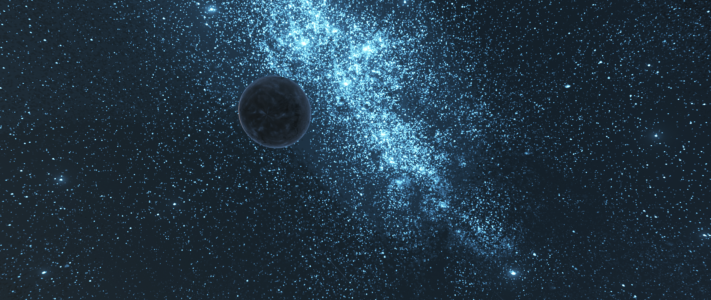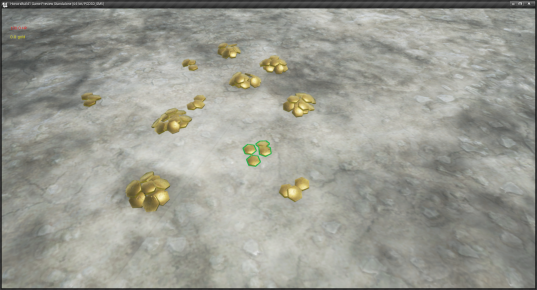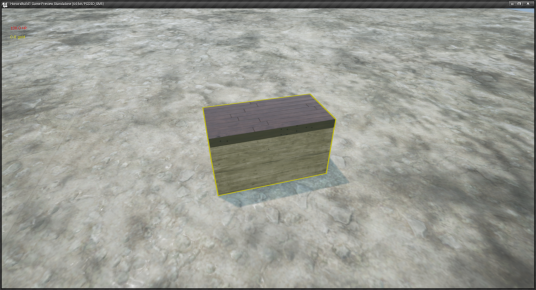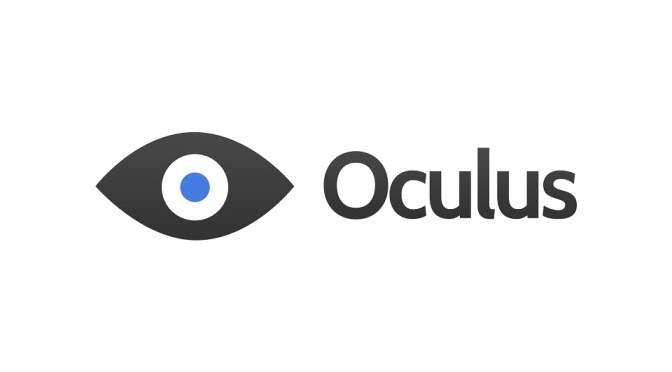The past few days following Hourences’ level design lessons has been very helpful. After his many insights into streamlining the content creation process, I feel that I have a much stronger grasp of the workflow Unreal Engine is designed for.
By using small, modular meshes and combining them into larger pieces, I’m able to avoid heavily relying on a 3D modeler to create architecture.
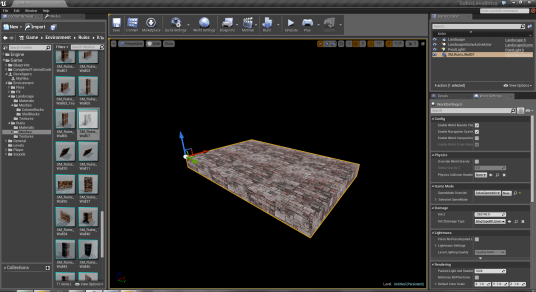


I use this method to create a few different assets.



These groups of meshes are assets that I can then combine to create an even more elaborate part of the scene. This is a wireframe version of the constructed building using these parts.
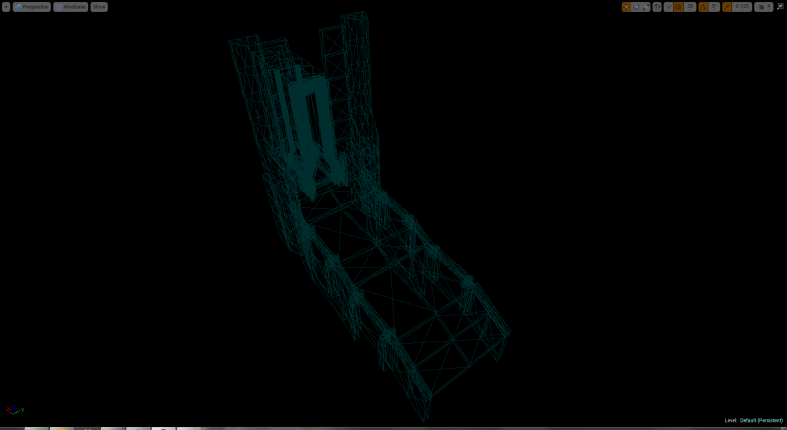
Through these processes, and using the meshes provided with Hourences’ tutorials, I’ve created a demonstration level. Although I don’t own the rights to the assets used in this demonstration level, this just serves as an excellent example of the level creation process I will employ with my own assets, as well as the ease of content creation made possible with UE4.
After the creation of the introduction building, the next step was to create outdoor terrain around it, which in UE4 is called the landscape. As seen in my previous post, I had been expecting to use the landscape to include impassible terrain, such as mountains, to better divide the outdoor areas. But as to the recommendation of Hourences, I believe I will mostly use it for the smoother, passable outdoor areas, still with some minor hills and valleys, but the main impassible terrain will be made from static meshes.
The landscape in the demonstration is sculpted directly from within UE4, and set to a custom size to accommodate the desired area. In the demonstration level, the landscape is set to a small size, just to surround the building and provide an outdoor area to populate and experiment with. The lessons also discussed his method of painting texture onto the landscape. It turned out much better than trying to work with the splatmap, but according to the community, the splatmap is still useful for extra detail.
The current method for texturing the landscape is setting up a layered material, where any layer can then be painted onto the terrain. This allows a very realistic looking blend of the different materials on the terrain.

After sculpting and painting the terrain, and placing the previously constructed building in the level, I then populate the area with “doodads”. Doodads are a term I carry with me from creating Starcraft maps in the late 90s and early 2000s. A doodad in Starcraft was generally decoration for the level, whether it be rocks, trees, debris, or even doors. Some would also have different states, such as open or closed for a door. The doodads in the demonstration level would be all of the rocks and boulders, foliage, and any other objects decorating the playable area. At this point the construction of the scene is nearly complete.





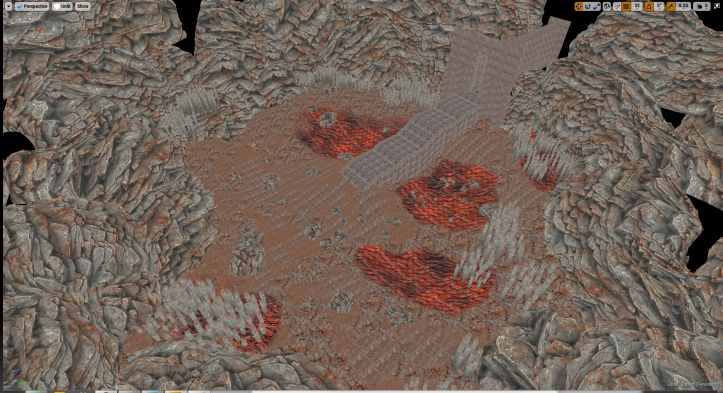

The next step of preparing the landscape was placing the lava plane. There is a single plane for the entire area, thus the lowest areas in the scene are the spots where there is lava. This involved a little bit of landscape adjustment, both sculpting and texturing, to properly adjust for this feature, and make sure the shape and texture of the terrain would properly accommodate the lava.

The final stage of the landscape tutorial was on foliage. There is a foliage painter in UE4 that takes any number of meshes and allows them to be painted (quickly placed) into the scene. The tool has a few different settings, such as the density of mesh placement, alignment to surface normal, as well as allowing variations in pitch, rotation, elevation, and scale to the painted meshes. One of the major benefits of this tool is that the meshes are grouped for batch rendering, and the batch size can be changed. The lesson covered all of these settings, as well as proper painting techniques.
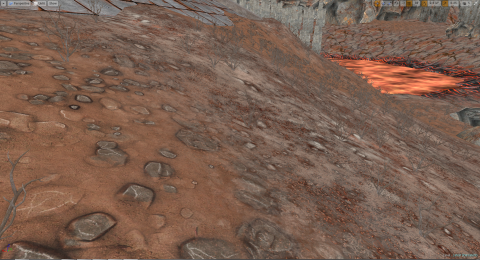
From here we have completed the construction of our scene, and can move on to lighting and final presentation touches. Lighting makes a huge difference in the feel of a scene, and Hourences’ did a good job of explaining how the lighting in UE4 functions, and his lighting techniques. Here is a lava pool without lights, and the same lava pool after my lighting has been applied.

Aside from the lit area in the bottom corner, the lava pool is very dark, and doesn’t really feel like hot deadly lava. The lighting gives it a much more menacing feel.
In the final stages of the lessons I was taught how to properly apply post-processing, bloom, skyboxes, reflection capture actors, fog systems, scene management techniques, and various other aspects of UE4 which I won’t go into detail about today. Instead I’ll leave you with a few screenshots of the current version of my demonstration level, which I feel are pretty impressive for my current low (but quickly growing!) level of knowledge.










